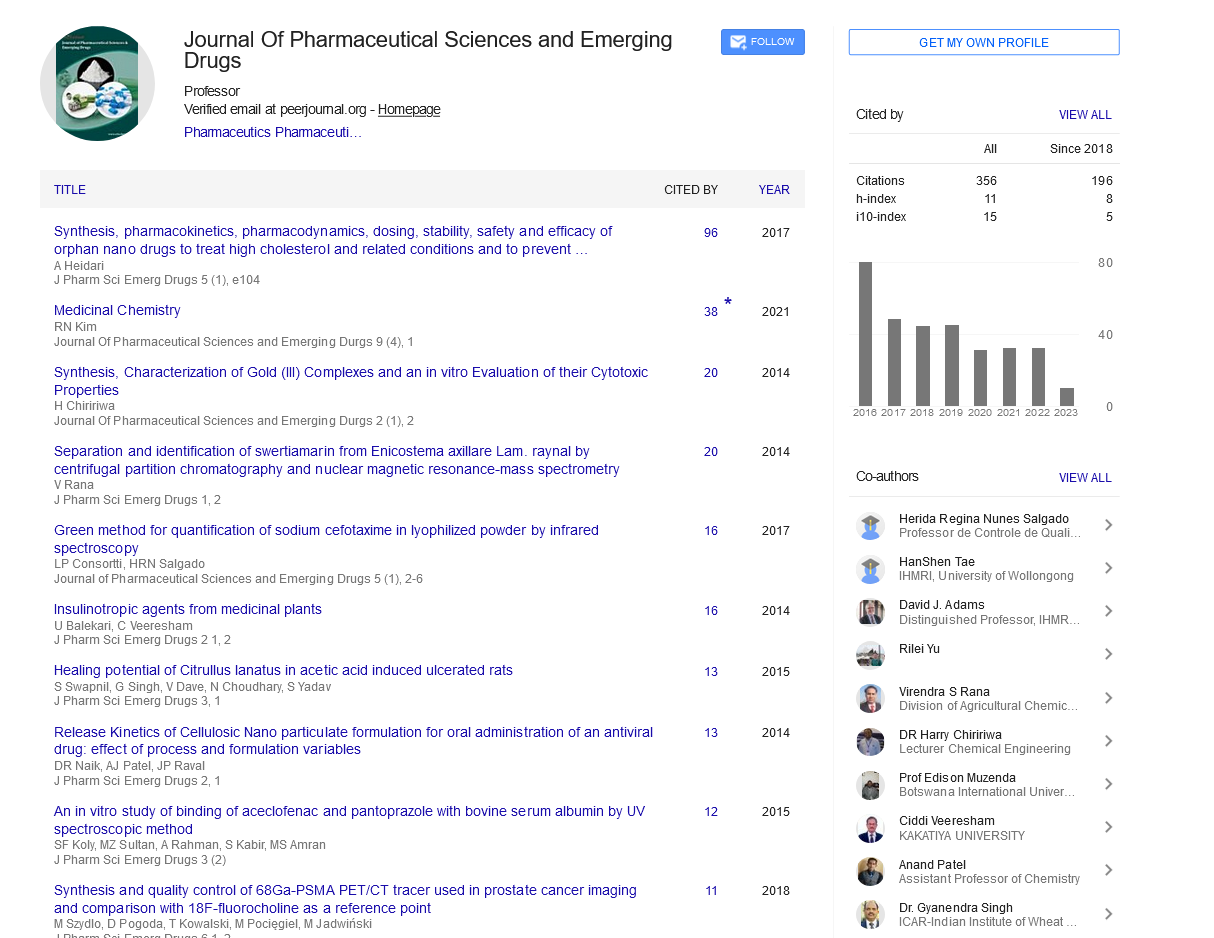Commentary, J Pharm Sci Emerg Drugs Vol: 12 Issue: 4
Drug Screening in Acute Intoxication: Tools and Techniques
Judith Morgan*
1Department of chemistry, University of Aarhus, Aarhus, Denmark
*Corresponding Author: Judith Morgan,
Department of chemistry, University of
Aarhus, Aarhus, Denmark
E-mail: judim@gmail.com
Received date: 21 July, 2024, Manuscript No. JPSED-24-148952;
Editor assigned date: 23 July, 2024, PreQC No. JPSED-24-148952 (PQ);
Reviewed date: 06 August, 2024, QC No. JPSED-24-148952;
Revised date: 13 August, 2024, Manuscript No. JPSED-24-148952 (R);
Published date: 20 August, 2024, DOI: 10.4172/2380-9477.1000203.
Citation: Morgan J (2024) Drug Screening in Acute Intoxication: Tools and Techniques. J Pharm Sci Emerg Drugs 12:4.
Abstract
Description
Drug screening is an essential component of clinical management in cases of acute intoxication. It helps healthcare providers identify substances involved in overdose, allowing for appropriate treatment and intervention. In emergency settings, timely identification of the drug(s) responsible for intoxication can be lifesaving, as it guides therapeutic decisions and determines the need for specific antidotes or supportive care. This article will analyse the tools and techniques used in drug screening for acute intoxication, their applications, limitations, and advancements. The primary goal of drug screening in acute intoxication is to identify the substance or substances responsible for the patient's condition. In cases of drug overdose or poisoning, patients may be unconscious, confused, or unable to provide an accurate history of drug use, making clinical assessment difficult.
Screening tests help narrow down possible causes and allow clinicians to initiate targeted treatment. Drug screening is performed using several methods, each with different strengths and limitations. The most common methods include immunoassay testing, Gas Chromatography-Mass Spectrometry (GC-MS), and Liquid Chromatography-Mass Spectrometry (LC-MS). Immunoassays are widely used for initial drug screening due to their rapid turnaround time and ease of use. These tests rely on antibodies that react with specific drug molecules or their metabolites. Immunoassays are commonly used to detect drugs such as opioids, benzodiazepines, amphetamines, and cannabis. However, they have limitations, including cross-reactivity (false positives) and the inability to detect newer synthetic drugs or specific substances at low concentrations.
GC-MS is considered the gold standard for drug screening due to its high sensitivity and specificity. This technique separates the components of a sample (e.g., blood or urine) using gas chromatography, followed by identification using mass spectrometry. GC-MS can detect a wide range of drugs and their metabolites, making it highly reliable. However, it is more time-consuming and requires specialized equipment, so it is typically used for confirmatory testing after an initial immunoassay screen. LC-MS is similar to GCMS but uses liquid chromatography instead of gas chromatography. It is particularly useful for detecting non-volatile substances that are not well-suited to GC-MS. LC-MS can identify a broader range of drugs, including newer synthetic substances such as designer opioids and cannabinoids. It is becoming increasingly common in clinical toxicology labs due to its versatility and high accuracy.
The most common biological specimens used for drug screening in acute intoxication are urine and blood. Urine testing is preferred for initial screening because it is non-invasive and can detect drugs and their metabolites that may have been eliminated from the bloodstream. Blood testing is used when more immediate detection of drugs is required, such as in cases where a patient's clinical condition is rapidly deteriorating. Other specimens, such as saliva and hair, can also be used for drug screening but are less commonly employed in acute settings. Saliva testing provides a non-invasive method for detecting recent drug use, while hair analysis is more useful for determining long-term patterns of drug use rather than acute intoxication.
Additionally, many screening tests cannot detect newer synthetic drugs, which are increasingly involved in overdoses. This limitation necessitates continuous updates to screening panels and the use of more advanced techniques like LC-MS. Drug screening plays a major role in managing acute intoxication, providing essential information for the timely and accurate diagnosis of drug overdose. While immunoassay tests offer rapid, initial results, confirmatory testing using advanced methods like GC-MS and LC-MS is essential for accurate identification. Despite ongoing challenges, advancements in drug screening techniques continue to improve the ability to detect a wide range of substances, ultimately aiding in better clinical outcomes.
 Spanish
Spanish  Chinese
Chinese  Russian
Russian  German
German  French
French  Japanese
Japanese  Portuguese
Portuguese  Hindi
Hindi 